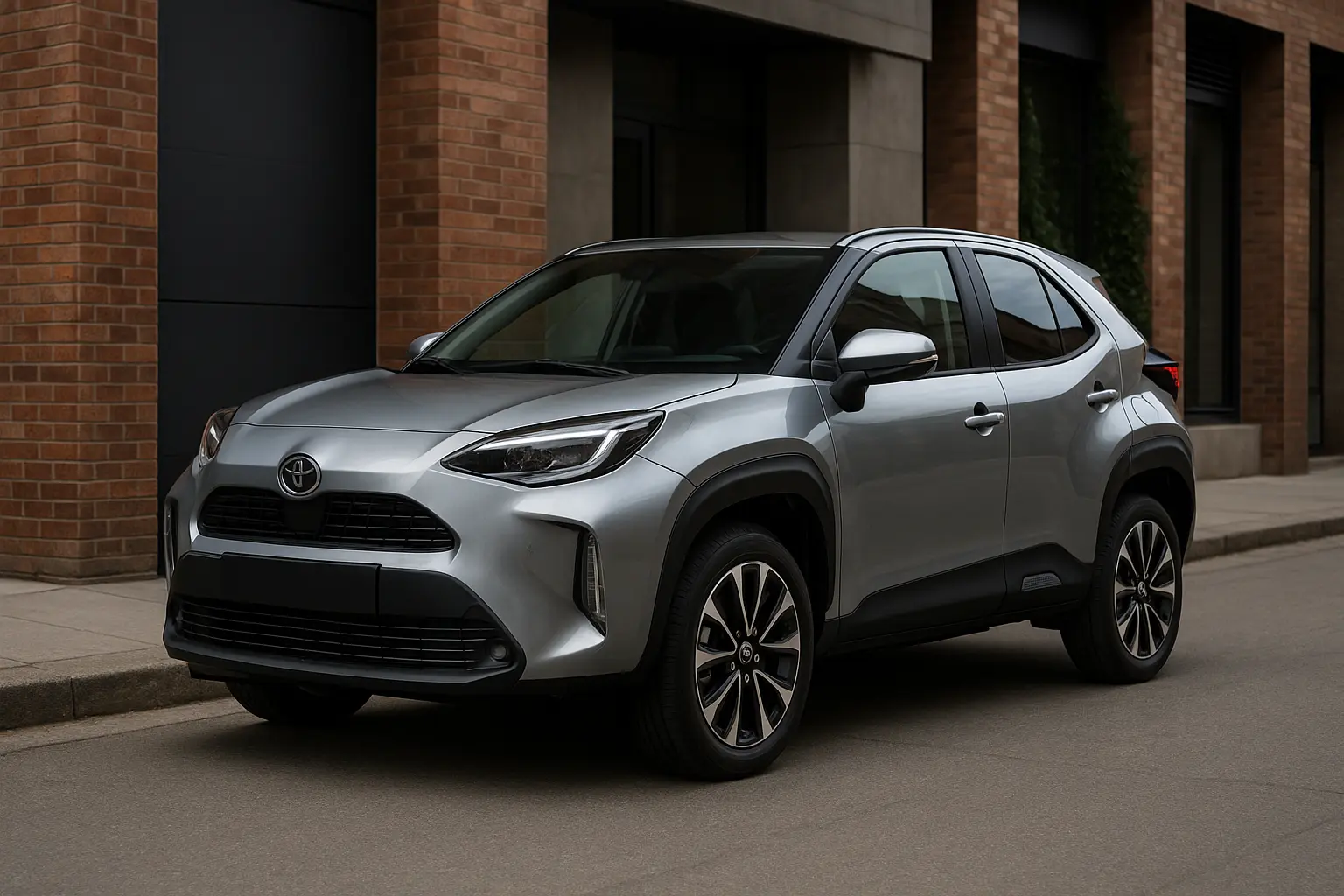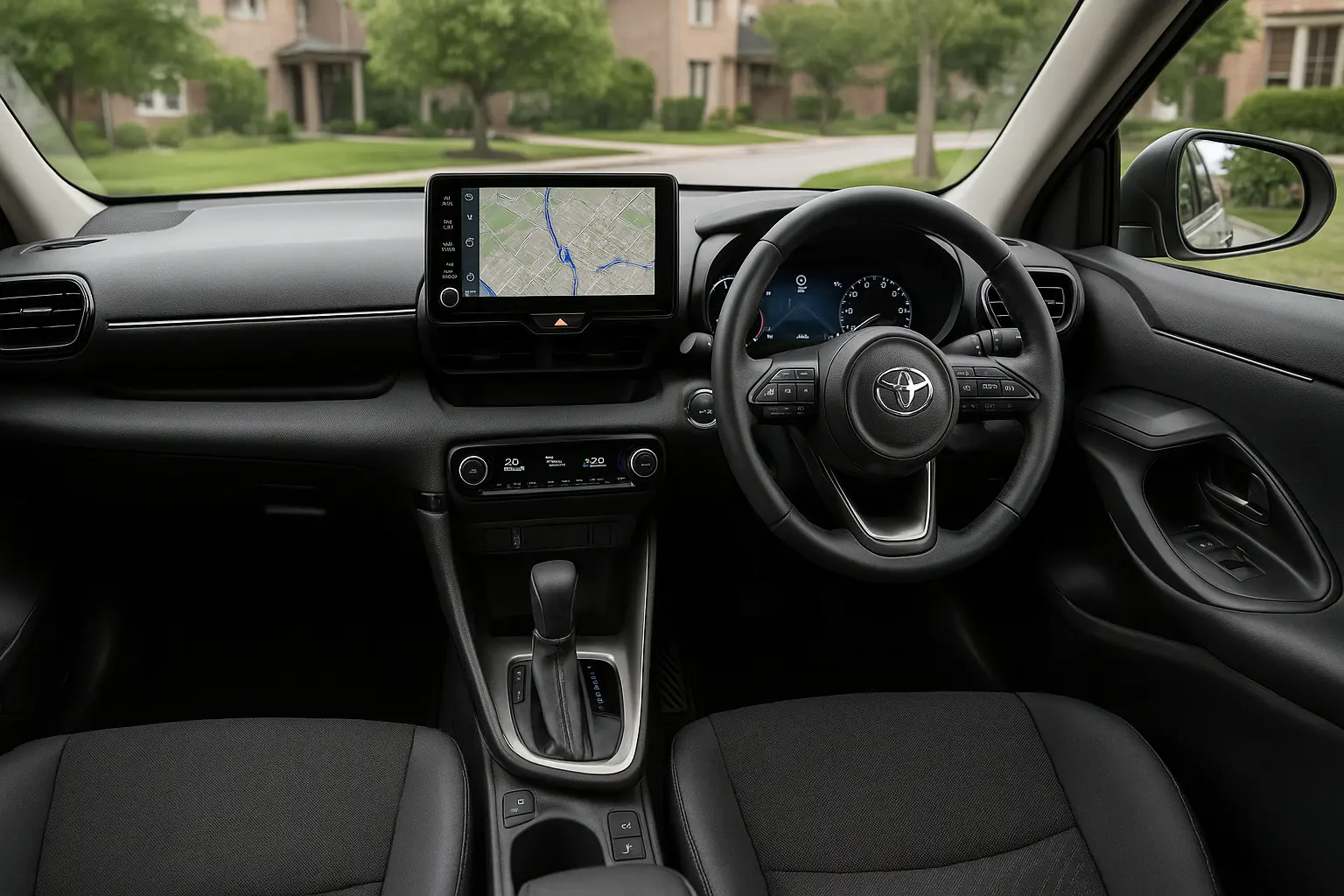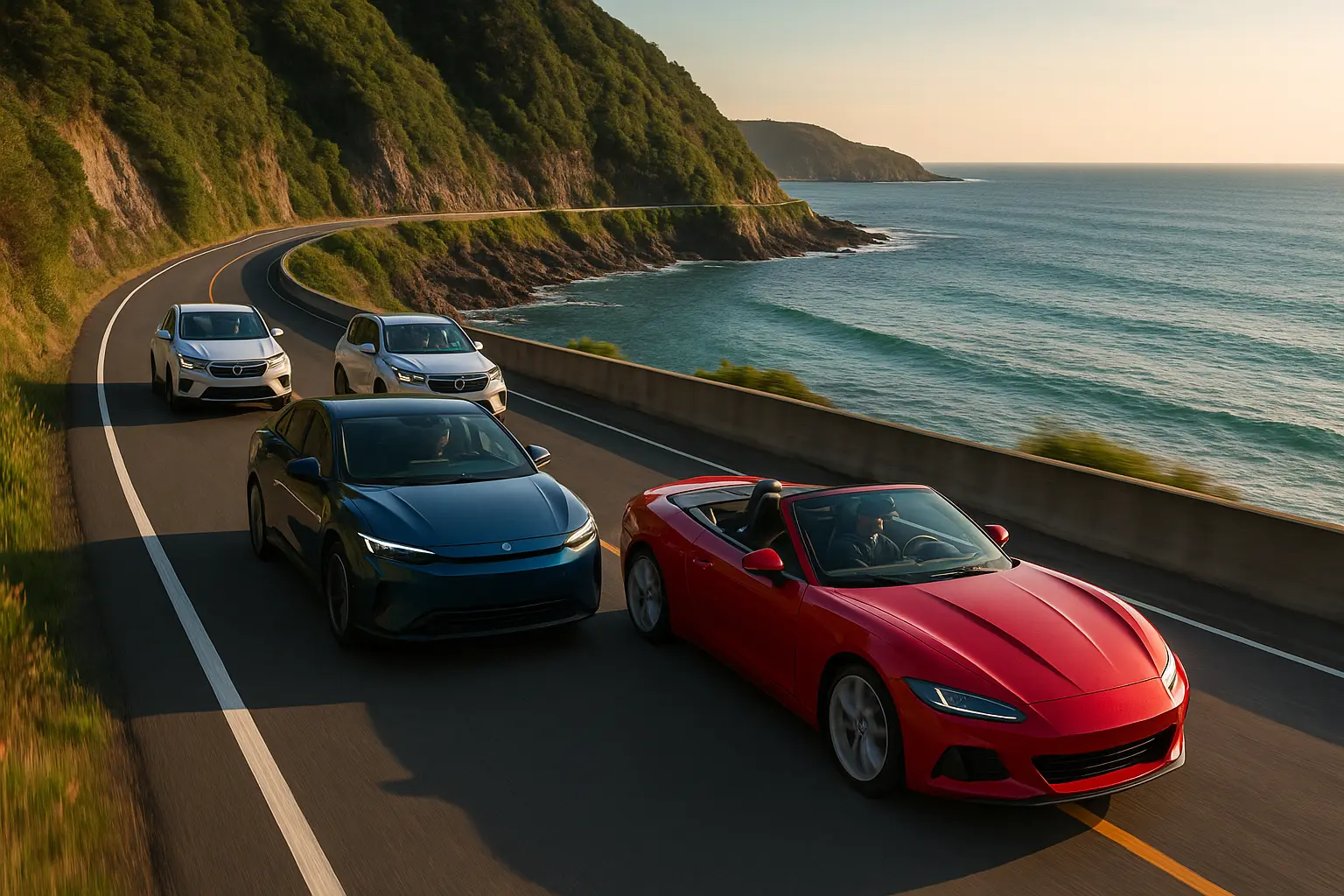The Australian car market has always had a soft spot for compact SUVs. They’re versatile, affordable to run, and perfect for navigating crowded city streets while still offering enough practicality for weekends away. The 2025 Toyota Yaris Cross enters this space with a fresh design, hybrid technology, and a feature set aimed squarely at urban drivers who don’t want to compromise on efficiency or style.
Toyota has been a leader in the hybrid SUV market, and the Yaris Cross continues to carry that legacy. But beyond the hybrid badge, does it truly deliver the right mix of value, performance, and everyday usability for Australians? Let’s dive deep into every aspect of the 2025 Toyota Yaris Cross review.

Design and Exterior Styling
The first thing that strikes you about the 2025 Toyota Yaris Cross is its bold yet compact design. Unlike some small SUVs that try too hard to look rugged, the Yaris Cross finds balance. It’s modern, a little sporty, and very urban-friendly.
At the front, Toyota’s new design language is obvious – a wide grille, sleek LED headlights, and sharper bumper contours give the car a purposeful look. The raised stance isn’t just for aesthetics; it provides a better driving position and visibility in traffic, a big win for Australian city drivers.
From the side, its compact proportions are clear. Measuring under 4.2 metres, the Yaris Cross is easy to park in tight spots. Chunky wheel arches and sculpted lines running along the doors add character, while higher trims offer two-tone paint options for a stylish edge.
The rear features slim tail lights connected by a horizontal bar, making the car look wider than it is. Toyota’s badge sits proudly in the centre, and the tailgate design allows for easier boot access – practical for shopping trips and luggage loading.
In short, the 2025 Yaris Cross manages to look both premium and practical, hitting the sweet spot for buyers who want a small SUV that looks at home in the city but doesn’t feel cheap.
Interior Comfort and Practicality
Step inside, and the Yaris Cross surprises with how much room Toyota has carved out of a small footprint.
The cabin is functional yet modern, with Toyota focusing on intuitive design rather than flashy gimmicks. The dashboard layout is simple, with a new floating infotainment display sitting above the air vents. Soft-touch materials are used on higher trims, and the ergonomics make daily driving stress-free.
Seating and Space
Front passengers enjoy supportive seats with good adjustment, and higher trims offer electric adjustments and heated options. The raised SUV seating position is a highlight – you get that commanding view of the road without feeling like you’re driving something bulky.
Rear passenger space is decent for a compact SUV. Adults can fit comfortably on shorter trips, though legroom may feel tight on long drives compared to larger SUVs. For families with young kids, however, the space is more than adequate, and ISOFIX mounting points make child seat installation straightforward.
Cargo and Boot Capacity
With around 390 litres of boot space, the Yaris Cross offers more practicality than many hatchbacks. Fold down the 60/40 split rear seats, and capacity expands to over 1,000 litres – enough for weekend getaways, camping gear, or even flat-pack furniture. A dual-floor boot setup also adds versatility, giving you a flat loading area or extra depth depending on needs.
For city buyers, this flexibility is gold – compact outside, practical inside.
Technology and Features
The 2025 Yaris Cross comes well-equipped even in base trims, reflecting Toyota’s approach to balancing value with innovation.
Infotainment
A central touchscreen dominates the dash, starting at 8 inches on lower trims and growing to 10.5 inches on premium models. Wireless Apple CarPlay and Android Auto are standard, a big plus for tech-savvy drivers who rely on their smartphones.
The system has been updated for smoother responsiveness, and higher trims add navigation, premium audio, and voice control. Physical knobs for volume and climate controls remain, which is a relief for many drivers tired of touch-only systems.
Digital Driver Display
Depending on the trim, you’ll get either a 7-inch or fully digital 12.3-inch driver display, offering clear graphics for speed, fuel economy, and hybrid energy flow.
Connectivity
USB-C charging ports, wireless phone charging, and multiple storage cubbies make life easier on the go. Toyota has also integrated connected services, including remote app features that allow you to check vehicle stats, lock/unlock, or even pre-condition the cabin.
Engine and Performance Options
One of the biggest selling points of the Yaris Cross is Toyota’s hybrid technology. In 2025, buyers in Australia will have the choice between a 1.5-litre petrol engine and a 1.5-litre hybrid powertrain.
Petrol Version
The petrol variant is simple and reliable, producing around 88kW. It’s paired with a CVT transmission and front-wheel drive. While not a powerhouse, it’s more than enough for urban commutes and light highway runs. Fuel consumption hovers around 5.5L/100km – respectable for a non-hybrid small SUV.
Hybrid Version
The hybrid is where the Yaris Cross shines. Combining the 1.5-litre petrol engine with an electric motor, it delivers roughly 85kW but feels more responsive thanks to the electric torque.
Fuel efficiency is outstanding, averaging 3.8–4.0L/100km in real-world driving. For Australian drivers conscious of rising fuel prices, this makes the hybrid a clear winner.
Toyota also offers an AWD-i system on select trims, which uses an additional electric motor on the rear axle for improved traction. This is particularly useful for wet roads, gravel tracks, or light off-road use without adding significant weight or complexity.
Driving Dynamics
How does the 2025 Toyota Yaris Cross feel on Australian roads? In short: light, confident, and urban-friendly.
City Driving
The compact dimensions and light steering make it a dream for city driving. Tight turns, parking garages, and lane changes are effortless. Visibility is excellent thanks to the raised ride height and large glass areas.
Highway Cruising
On highways, the Yaris Cross feels stable and composed. The hybrid system settles into a quiet cruise, with the petrol engine cutting in smoothly when needed. Cabin noise is reduced compared to older models, though strong crosswinds may remind you this is still a small SUV.
Suspension and Ride
The suspension is tuned for comfort, soaking up potholes and uneven surfaces well. It’s not sporty by any means, but that’s not its mission. Instead, Toyota has prioritised a calm, predictable ride, which most Australian buyers will appreciate.
Safety and Ratings
Toyota doesn’t cut corners on safety, and the Yaris Cross 2025 is no exception.
Standard safety features include:
- Toyota Safety Sense suite
- Autonomous Emergency Braking (AEB)
- Lane Departure Alert with Steering Assist
- Lane Tracing Assist
- Adaptive Cruise Control
- Traffic Sign Recognition
- Blind Spot Monitor and Rear Cross Traffic Alert (on higher trims)
The 2025 model is expected to maintain its 5-star ANCAP rating, giving buyers peace of mind. Multiple airbags, reinforced body structure, and advanced driver assistance systems make it one of the safest choices in its segment.
Variants and Pricing in Australia
Toyota will likely continue its tiered approach for the Yaris Cross, offering a base GX, mid-spec GXL, and top-spec Urban. Pricing is expected to start around $28,000 drive-away for the petrol version and move past $36,000 for the fully loaded hybrid AWD.
While not the cheapest in its class, Toyota offsets the price with hybrid efficiency, strong resale values, and the reassurance of a nationwide dealer network.
Competitors in the Small SUV Market
The Yaris Cross competes in one of Australia’s hottest segments – the small SUV category. Rivals include:
- Mazda CX-3 – stylish but ageing
- Hyundai Kona – bolder styling, more tech options
- Kia Stonic – budget-friendly with decent space
- Honda HR-V – practical and roomy
- Renault Captur – European flair, less common
What sets the Yaris Cross apart is Toyota’s proven hybrid system and reliability reputation. While others may offer flashier designs or more power, few can match Toyota’s balance of practicality, efficiency, and long-term ownership peace of mind.
Fuel Efficiency and Ownership Costs
Fuel efficiency is a major drawcard for the Yaris Cross. The hybrid option can realistically save owners thousands over years of city driving compared to petrol-only rivals.
Ownership costs are kept low thanks to Toyota’s capped-price servicing program and 5-year/unlimited km warranty. Hybrids also benefit from Toyota’s long track record of battery reliability, and the hybrid battery is covered by extended warranty programs for extra peace of mind.
Insurance premiums are competitive due to the Yaris Cross’s safety features and Toyota’s low-risk reputation. Combined with strong resale values, the overall ownership proposition is one of the best in the small SUV class.
Who Is the Toyota Yaris Cross For?
The 2025 Yaris Cross is designed for:
- Urban professionals who need a car that’s easy to park and cheap to run
- Small families who want a practical SUV without moving up to a bulky RAV4
- Eco-conscious buyers who want hybrid technology but at an affordable entry point
- Older drivers seeking comfort, safety, and Toyota reliability
It’s less suitable for those needing maximum rear-seat space or towing capability. But for 80% of Australian city buyers, it ticks nearly every box.
Final Verdict
The 2025 Toyota Yaris Cross represents everything Australians love about compact SUVs – practicality, efficiency, and style – wrapped in a package backed by Toyota’s bulletproof reliability.
It’s not the fastest, nor the flashiest, but it nails the balance of features that matter most: fuel efficiency, safety, ease of use, and everyday practicality.
Leave a comment
Your email address will not be published. Required fields are marked *




















